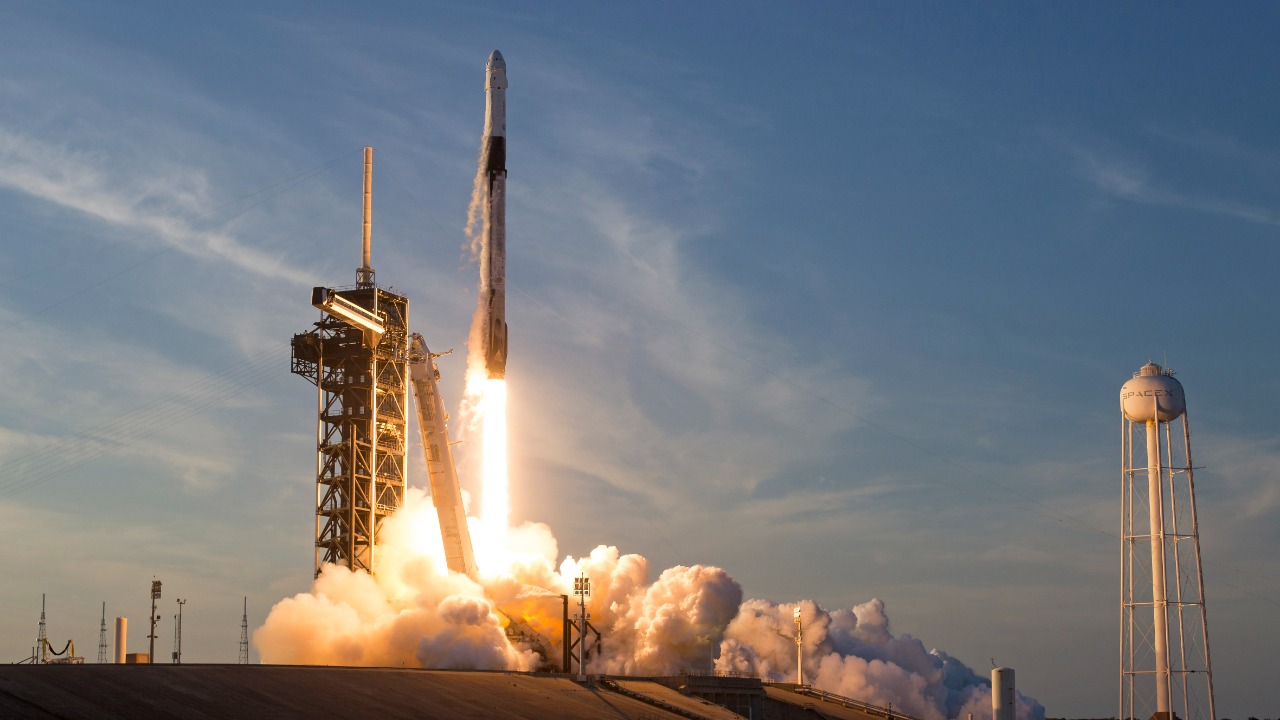
SpaceX has successfully launched the Sentinel-6B ocean-mapping satellite for Europe and NASA, marking a significant milestone in the company’s history. The launch, which took place early on November 17, 2025, utilized a previously flown Falcon 9 rocket for the 500th time. This US-European mission is designed to monitor Earth’s oceans and track rising seas, serving as a crucial “final warning from space” as storm-lashed California watched the event unfold.
The SpaceX Falcon 9 Launch
SpaceX’s launch of the Sentinel-6B satellite to orbit marks a significant achievement for the company, as it represents the 500th time a used rocket has been deployed for such a mission. This milestone underscores SpaceX’s commitment to sustainable and cost-effective space exploration. The launch took place as scheduled on November 17, 2025, demonstrating the reliability of SpaceX’s operations and the strength of its collaboration with NASA.
This mission was a joint effort between NASA and SpaceX, with the launch taking place from a site dedicated to supporting US-European satellite missions aimed at monitoring Earth’s oceans. This collaboration is a testament to the international cooperation that is increasingly defining space exploration and research.
Sentinel-6B Satellite Overview
The Sentinel-6B is a powerful ocean-mapping satellite designed for Europe and NASA. Its primary focus is on sea-level monitoring, a critical aspect of understanding and addressing the impacts of climate change. The satellite’s mission is part of NASA’s broader efforts to launch Sentinel missions for ocean observation, highlighting the agency’s commitment to leveraging advanced technology for environmental monitoring.
International Collaboration Details
The Sentinel-6B mission represents a joint US-European satellite project, involving NASA and various European partners. SpaceX provided the launch services for this mission, further cementing its role as a key player in international space exploration efforts. This collaboration underscores the ongoing partnerships in Earth observation satellites, reflecting a global commitment to understanding and addressing environmental challenges.
Timing and Weather Context
The launch of the Sentinel-6B satellite coincided with storm-lashed conditions in California, providing a stark reminder of the environmental challenges that the mission seeks to address. The event’s significance was emphasized in pre-launch coverage, drawing attention to the importance of monitoring rising sea levels. The satellite’s focus on this issue provided a poignant backdrop to the weather event unfolding in California during the launch.
Related Sentinel Program Launches
Earlier in the month, on November 4, 2025, the Ariane 6 launched the Sentinel-1D Earth observation satellite. This satellite complements the broader Sentinel series, which includes ocean and Earth monitoring efforts like the Sentinel-6B. The Sentinel program involves multiple satellites, with each new mission, such as Sentinel-6B, building on the successes of prior missions for comprehensive Earth observation.
Significance for Ocean Monitoring
The Sentinel-6B satellite is tasked with sending data on ocean mapping and sea-level changes, providing crucial insights into the impacts of climate change. The mission has been described as a “final warning from space” regarding rising seas, highlighting the urgency of addressing this issue. The launch of Sentinel-6B extends US-European efforts to monitor Earth’s oceans through advanced satellite technology, demonstrating the potential of space exploration for environmental monitoring and protection.
More from MorningOverview